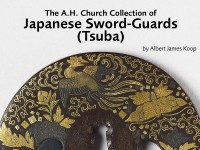The A. H. Church Collection of Japanese Sword-Guards (Tsuba)
An unpublished catalogue of the A. H. Church collection of Japanese sword-guards (tsuba) by Albert James Koop.

This notable school almost takes rank with the Gotō, the Nara and the Yokoya in the extent of its influence, the numbers of its pupils, and the importance of the branch schools founded by them.
The founder, Yanagawa [Japanese text] Naomasa, b. 1691, d. 1757, was a pupil of the early Yokoya as well as of the Yoshioka and combined the characteristics of both these schools. So completely was the resulting style assimilated by his numerous following that few great schools may be said to present a more perfect continuity of manner.
Notice
Object information may not accurately reflect the actual contents of the original publication, since our online objects contain current information held in our collections database. Click on 'buy this publication' to purchase printed versions of our online publications, where available, or contact the Jameel Study Centre to arrange access to books on our collections that are now out of print.
© 2013 University of Oxford - Ashmolean Museum






